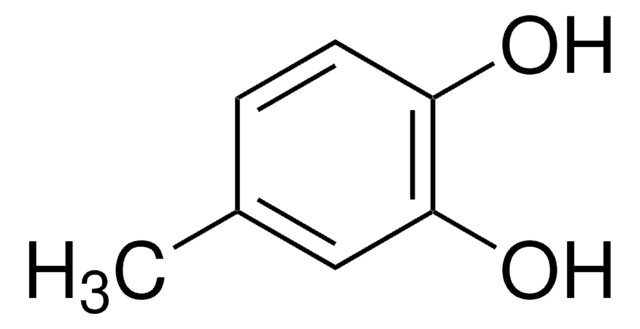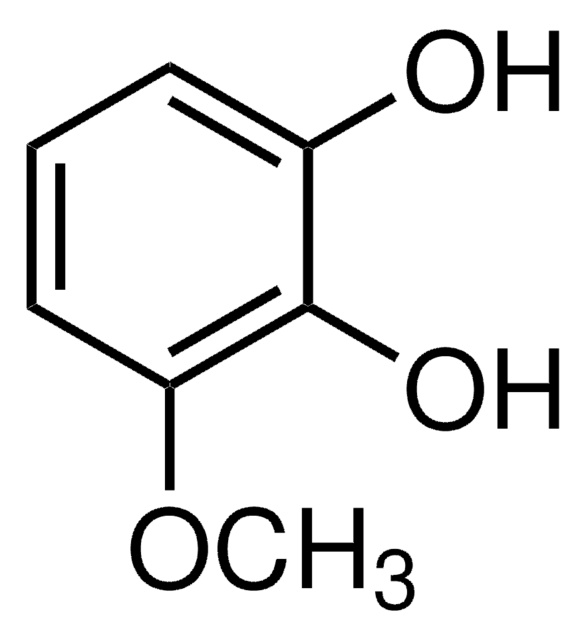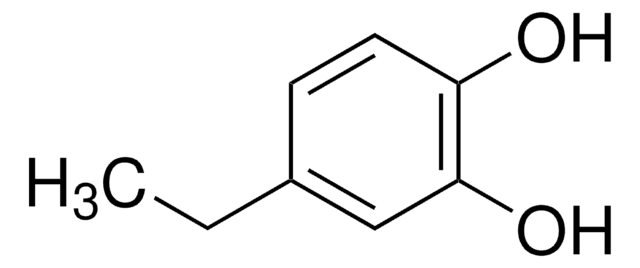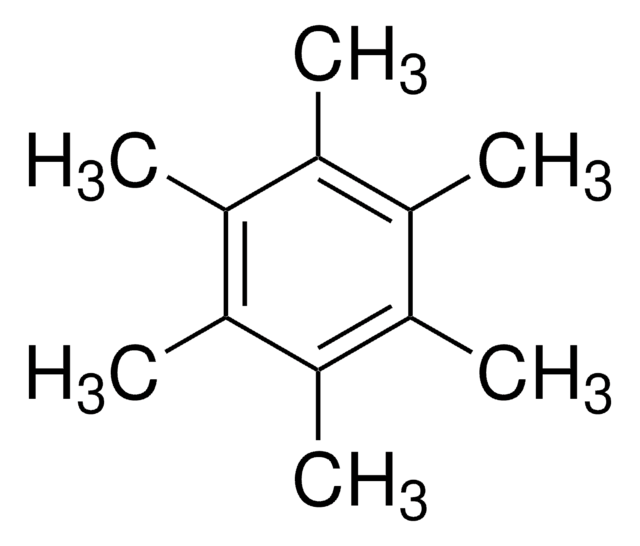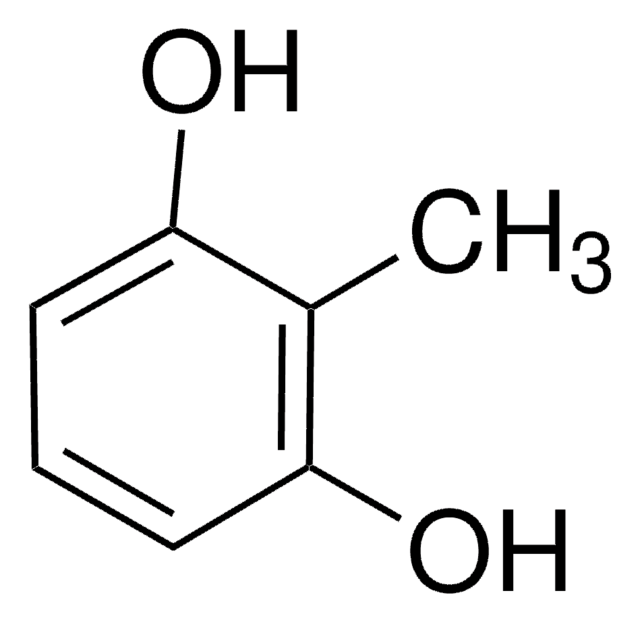Kluczowe dokumenty
M34006
3-Methylcatechol
98%
Synonim(y):
1,2-Dihydroxy-3-methylbenzene, 2,3-Dihydroxytoluene, 2,3-Toluenediol, 2-Hydroxy-3-methylphenol, 2-Hydroxy-6-methylphenol, 3-Methyl-1,2-benzenediol, 3-Methyl-1,2-dihydroxybenzene, 3-Methylpyrocatechol
About This Item
Polecane produkty
Poziom jakości
Próba
98%
bp
241 °C (lit.)
mp
65-68 °C (lit.)
Warunki transportu
wet ice
temp. przechowywania
2-8°C
ciąg SMILES
Cc1cccc(O)c1O
InChI
1S/C7H8O2/c1-5-3-2-4-6(8)7(5)9/h2-4,8-9H,1H3
Klucz InChI
PGSWEKYNAOWQDF-UHFFFAOYSA-N
Powiązane kategorie
Hasło ostrzegawcze
Warning
Zwroty wskazujące rodzaj zagrożenia
Zwroty wskazujące środki ostrożności
Klasyfikacja zagrożeń
Acute Tox. 4 Oral - Eye Irrit. 2 - Skin Irrit. 2 - Skin Sens. 1 - STOT SE 3
Organy docelowe
Respiratory system
Kod klasy składowania
11 - Combustible Solids
Klasa zagrożenia wodnego (WGK)
WGK 3
Temperatura zapłonu (°F)
Not applicable
Temperatura zapłonu (°C)
Not applicable
Środki ochrony indywidualnej
dust mask type N95 (US), Eyeshields, Gloves
Wybierz jedną z najnowszych wersji:
Masz już ten produkt?
Dokumenty związane z niedawno zakupionymi produktami zostały zamieszczone w Bibliotece dokumentów.
Klienci oglądali również te produkty
Protokoły
Separation of Resorcinol 50 mg/mL; Pyrocatechol; 2-Methylresorcinol; 4-Methylcatechol; 2,5-Dimethylresorcinol 50 mg/mL; 3-Methylcatechol 50 mg/mL; 4-Nitrocatechol 50 mg/mL
Nasz zespół naukowców ma doświadczenie we wszystkich obszarach badań, w tym w naukach przyrodniczych, materiałoznawstwie, syntezie chemicznej, chromatografii, analityce i wielu innych dziedzinach.
Skontaktuj się z zespołem ds. pomocy technicznej